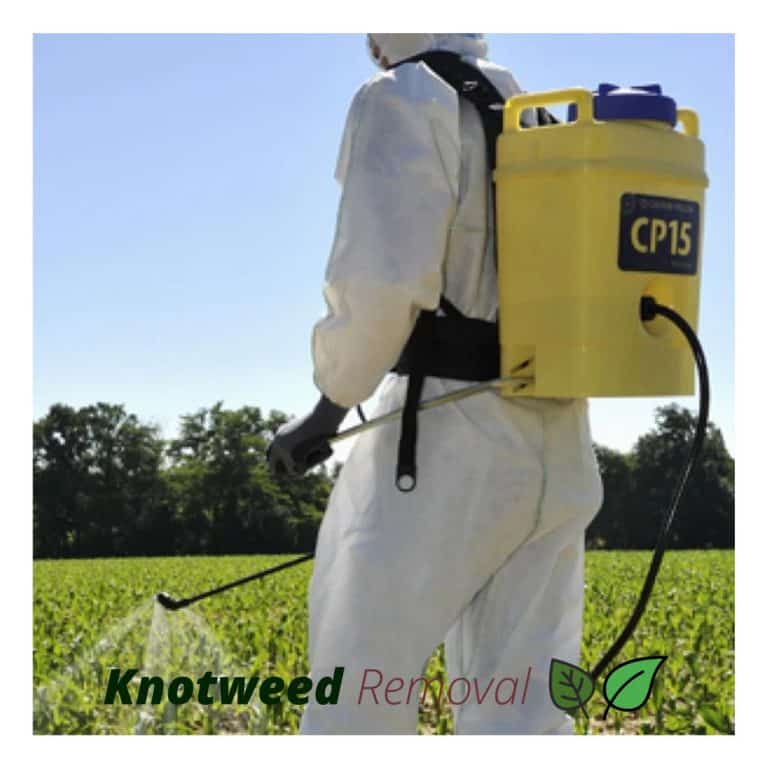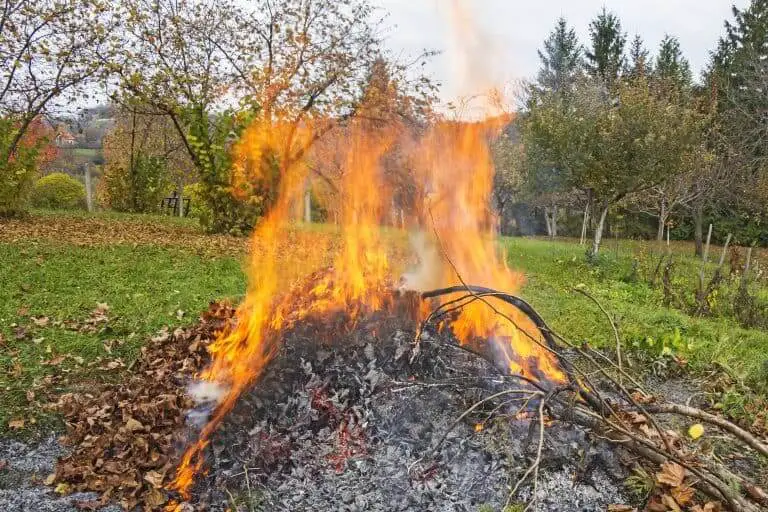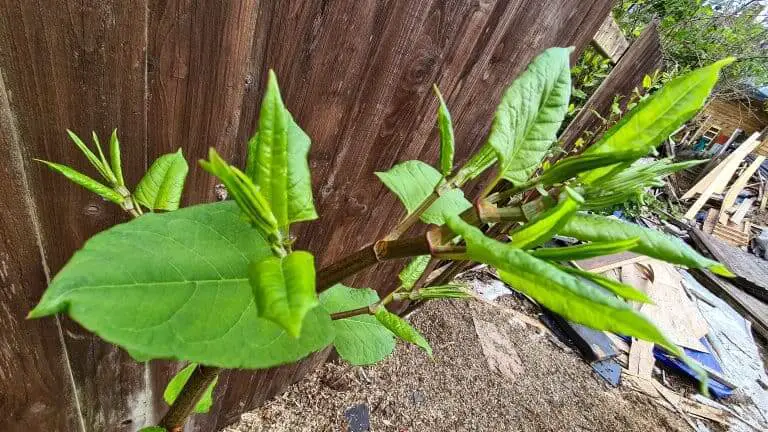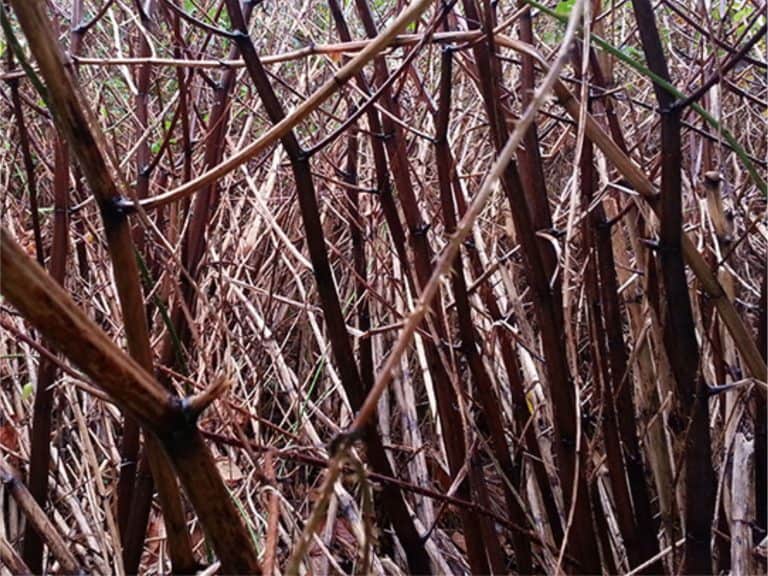Identify Japanese knotweed on your property and the way it grows in different forms and shapes depending on the season, environment, and previous treatments. The knotweed’s identification can be tricky, and thus needs a keen eye.
Fortunately, this article will help you understand how to identify Japanese knotweed through different seasons.
Why is Japanese knotweed identification important?
The Japanese knotweed is an extremely invasive plant that is classified as controlled waste in the UK. This weed has the potential to cause significant damage to railways, walkways, buildings, drainage systems, and other various infrastructures.
The plant becomes dormant during winter but bounces back in spring and grows into thick bushes that can quickly lead to encroachment. There is no doubt that Japanese knotweed identification is the first step toward proper treatments and elimination.
What does Japanese knotweed look like?
There are a good number of plants in the UK that look like Japanese knotweed. However, with the following Japanese knotweed characteristics in mind, you will be able to accurately identify the weed and ensure proper treatment and removal.
1. Japanese knotweed leaves
The weed’s leaves are heart or shovel-shaped with a pointing tip. The leaves will be bright green when the plant is in foliage. The leaves are arranged in a staggered manner on the stems. They can grow up to 15cm long.
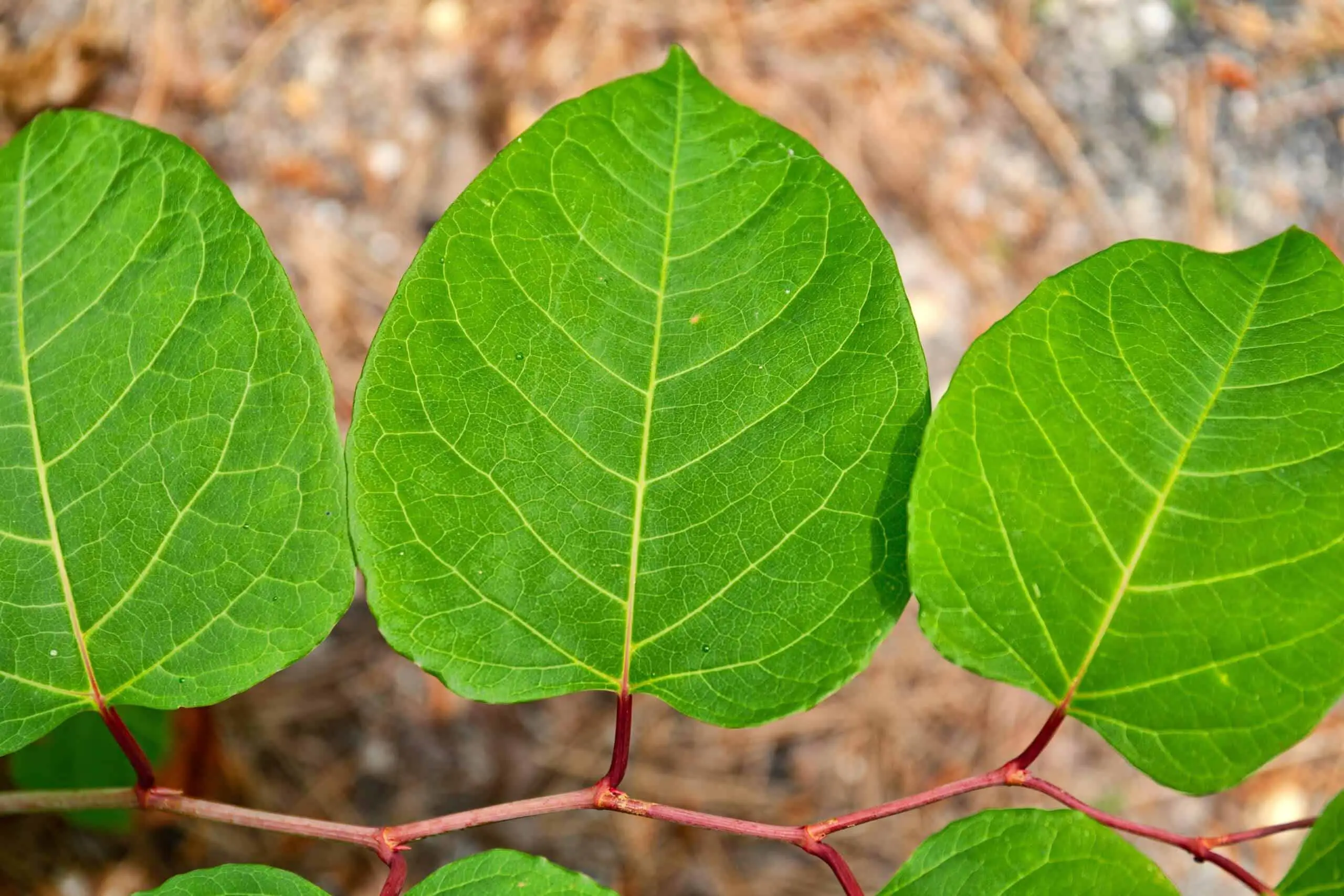
2. Japanese knotweed flowers
The flowers of the knotweed form in long clusters that are seen towards the end of September. The clusters are usually 0.5 cm wide and can grow up to 10 cm long. The leaves and the flowers form dense foliage that can be seen towards the end of summer.
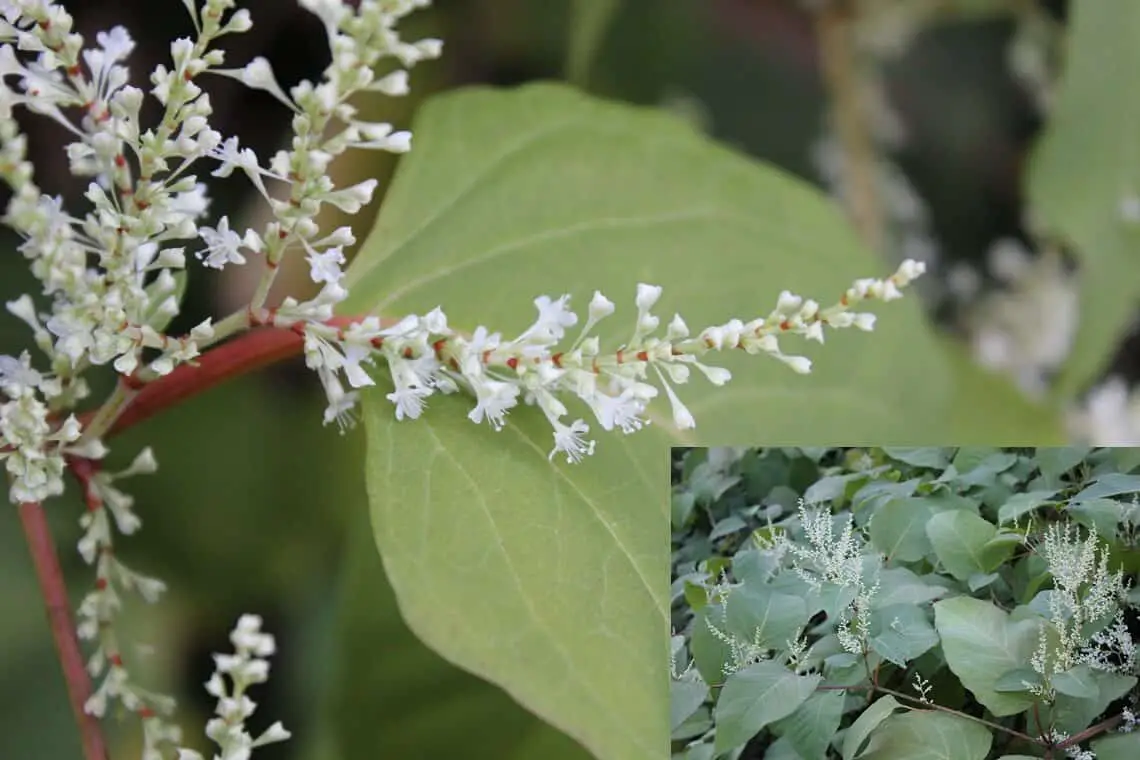
3. Japanese knotweed stems
The Japanese stem is quite distinct, which makes it somehow easier to identify the plant. The stem grows in a zigzag pattern, as seen in plants above 2 meters in height.
The weed’s stems have nodes and purple speckles like that of the bamboo plant. The stem remains visible in winter if no treatment or eradication is done. Its mature stems are hollow; they become brittle in winter as the plant dies off.
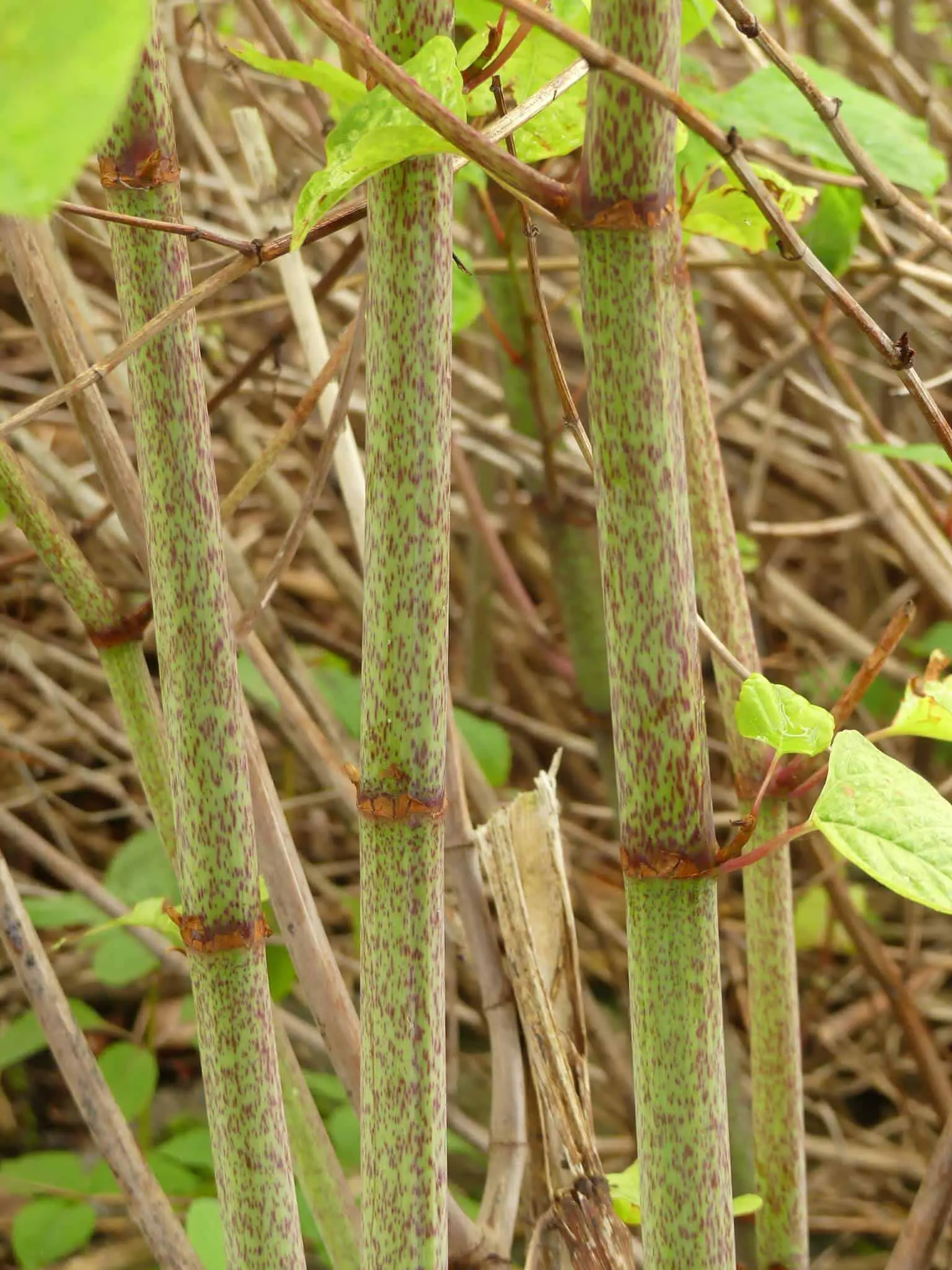
4. The Japanese knotweed roots
The weed’s roots are known as the rhizome system. The rhizomes can be sometimes considered to be underground stems. It is fresh and breaks when bent. The inner part of it is orange or yellow, while the outer parts remain dark brown throughout its growth.
The rhizome grows up to 3 meters deep and 7 meters horizontally from the weed. This extension quickly spreads the plant over a large area within a short period through vegetative means.
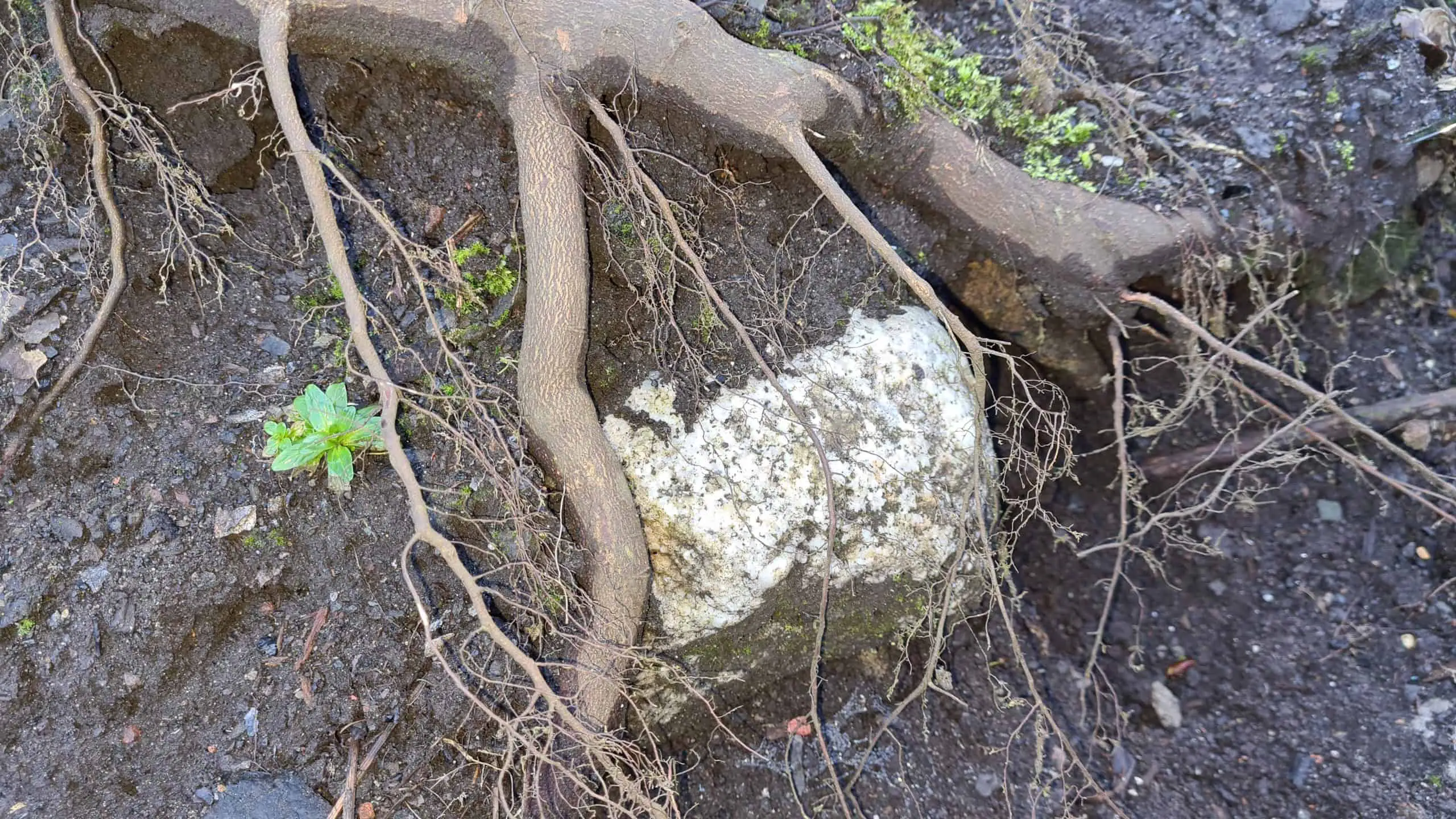
5. Japanese knotweed crown
The weed’s crown buds form and appear in early spring. It is round in shape and will often look flat at the base of old stems. The buds are about 3 cm in size and pink or red in colour.
A new knotweed stem can grow extensively from the Japanese knotweed at the end of each cycle.
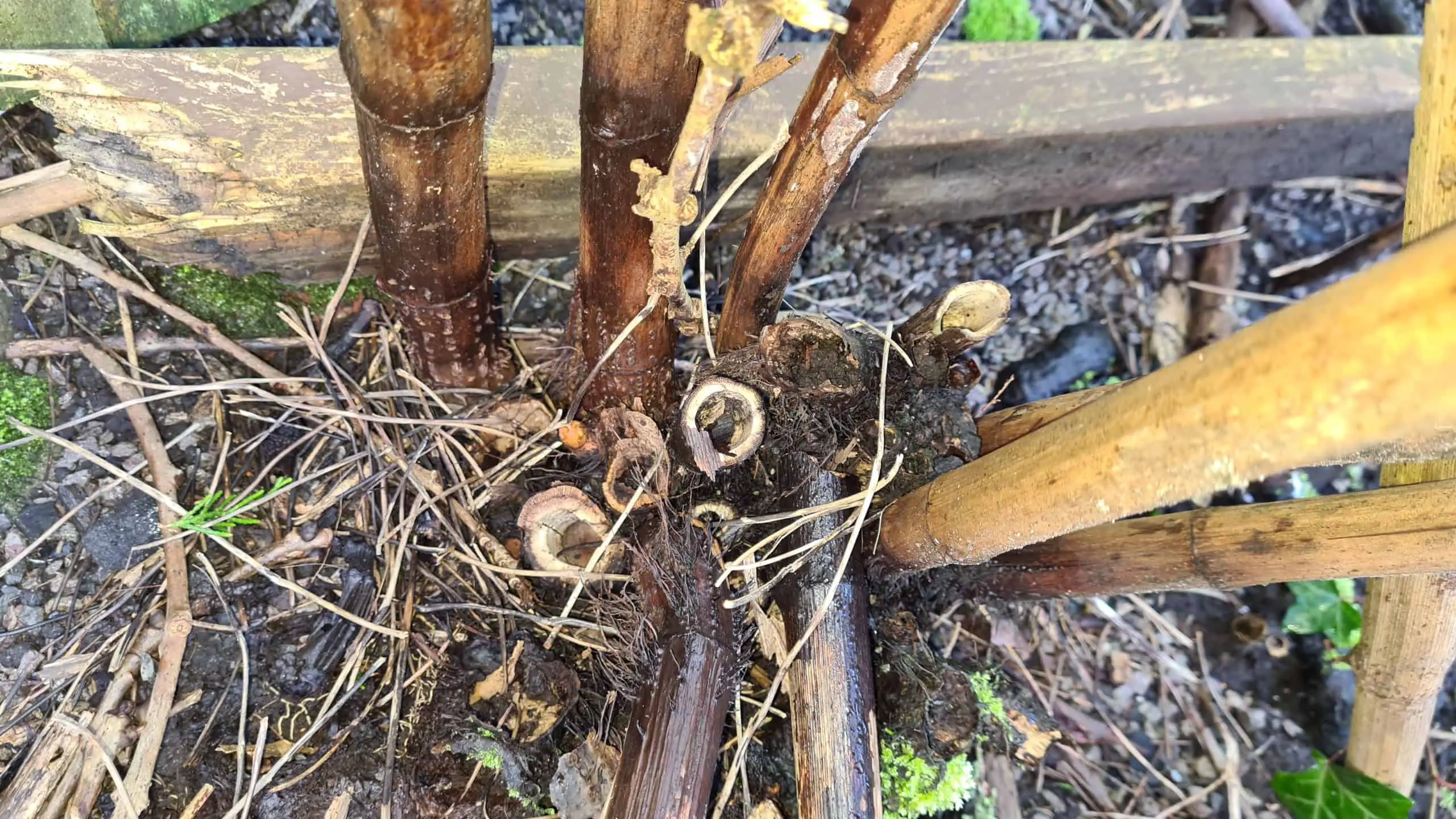
Identify Japanese knotweed through the seasons.
Here are the features of the Japanese knotweed through different seasons:
1. Spring
This weed grows fastest during spring. There will be new shoots emerging, they are red or purple and look like asparagus. The knotweed’s leaves are red or dark green; they will grow broad and assume the shape of a shovel.
The canes of the weed grow up to 3 meters in height towards the end of spring.
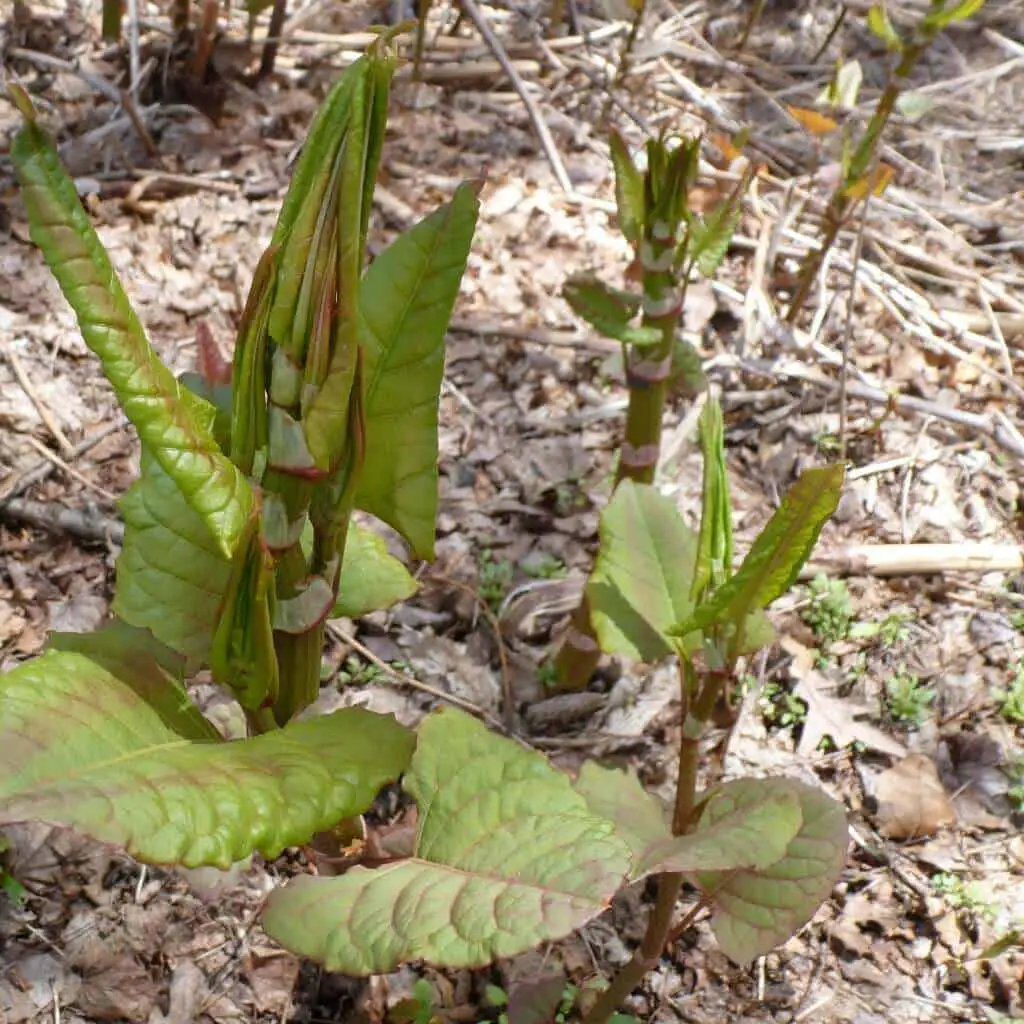
2. Summer
The leaves of the Japanese knotweed are dark green and heart or shovel-shaped. They can grow up to 20 cm in width during this period.
During this period, the stems grow to 3 meters in height; there are clear nodes between the stem sections similar to those of bamboo. The leaves grow on the stem in a zigzag manner.
The flowering clusters start to form towards the end of summer. The leaves covering will significantly increase.
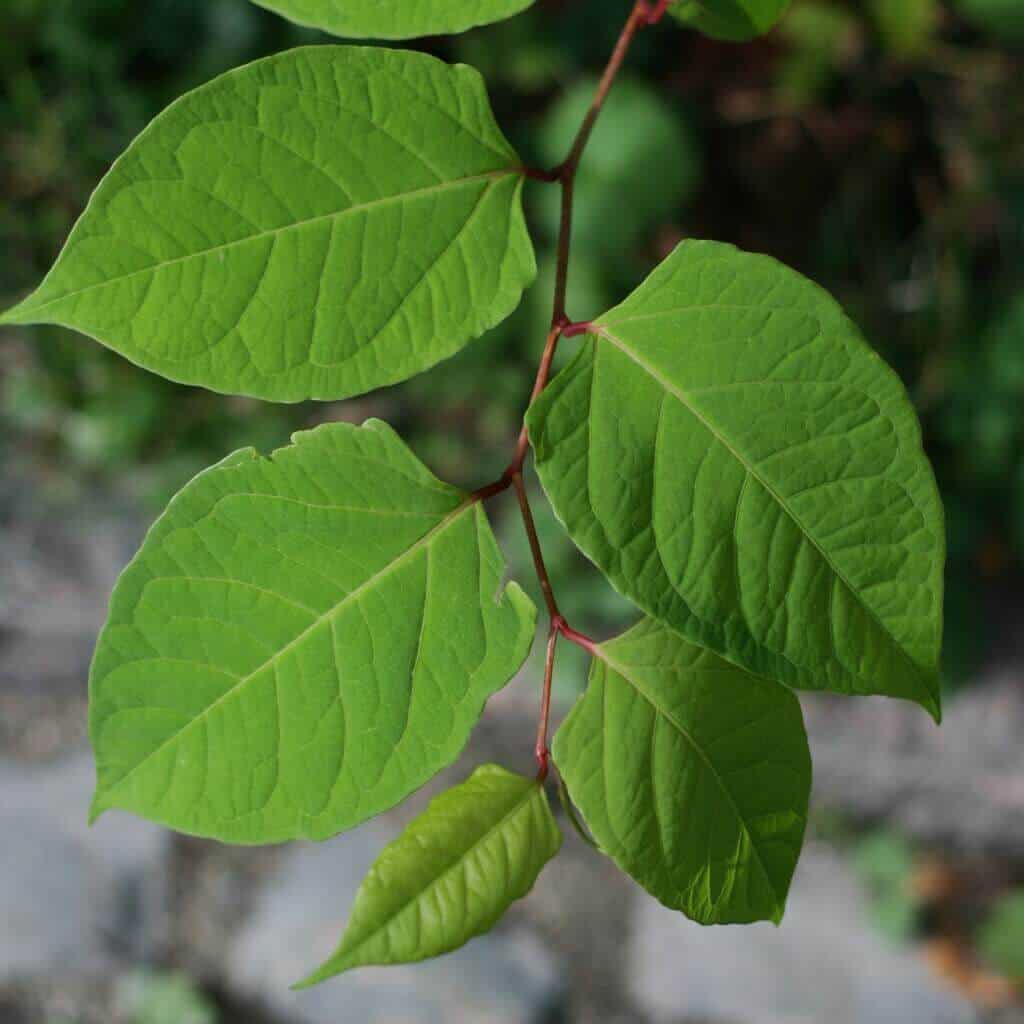
3. Autumn
The dense covering of leaves is the most dominant characteristic of Japanese knotweed in autumn. As the season progresses, these leaves will begin to turn yellow. You will notice a significant amount of leaves fall towards the end of October.
During this season, the knotweed stem is still about 3 meters tall. The stems are hollow, and they slowly begin to turn brown.
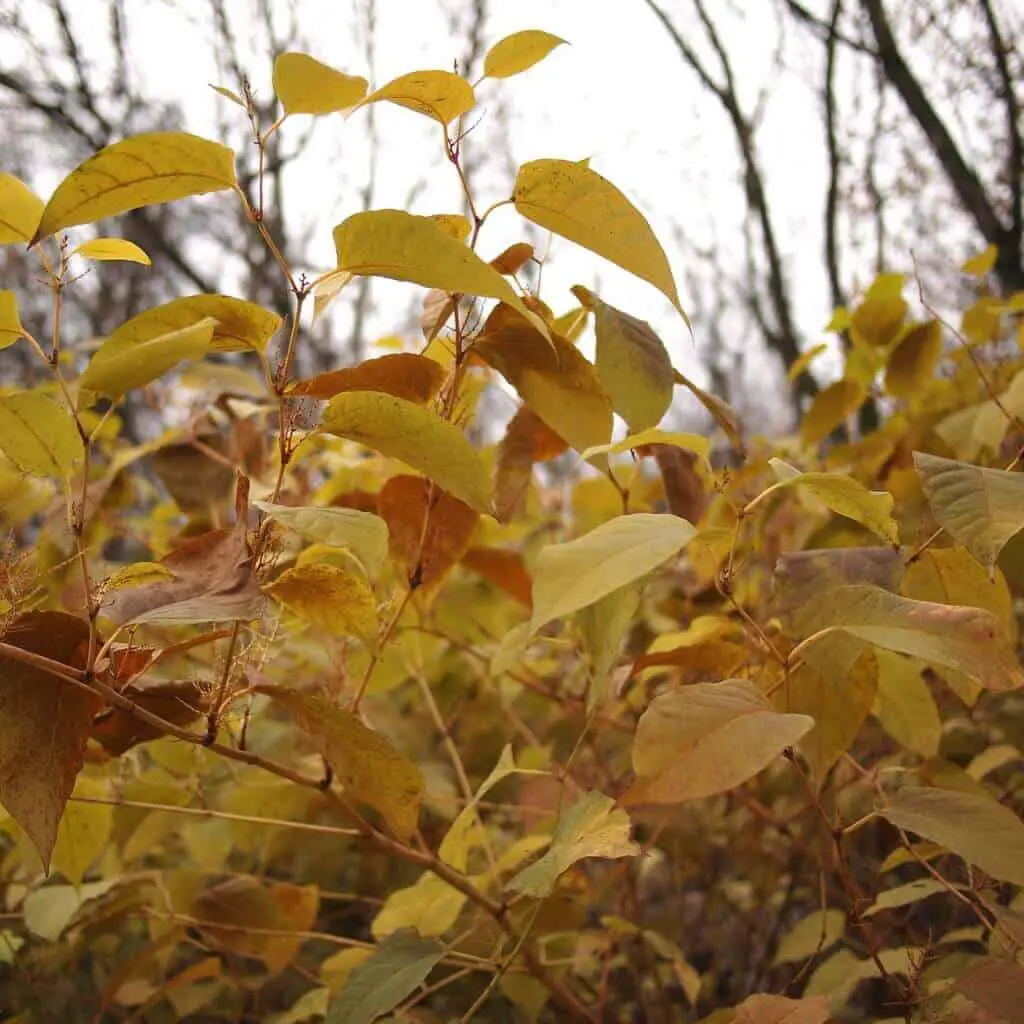
4. Winter
The knotweed canes will die and become dormant towards the end of autumn, the beginning of winter. There are also large leaves that fall in early winter. The rods will be dark brown, hollow, and extremely brittle. They eventually collapse on one another as decomposition sets in.
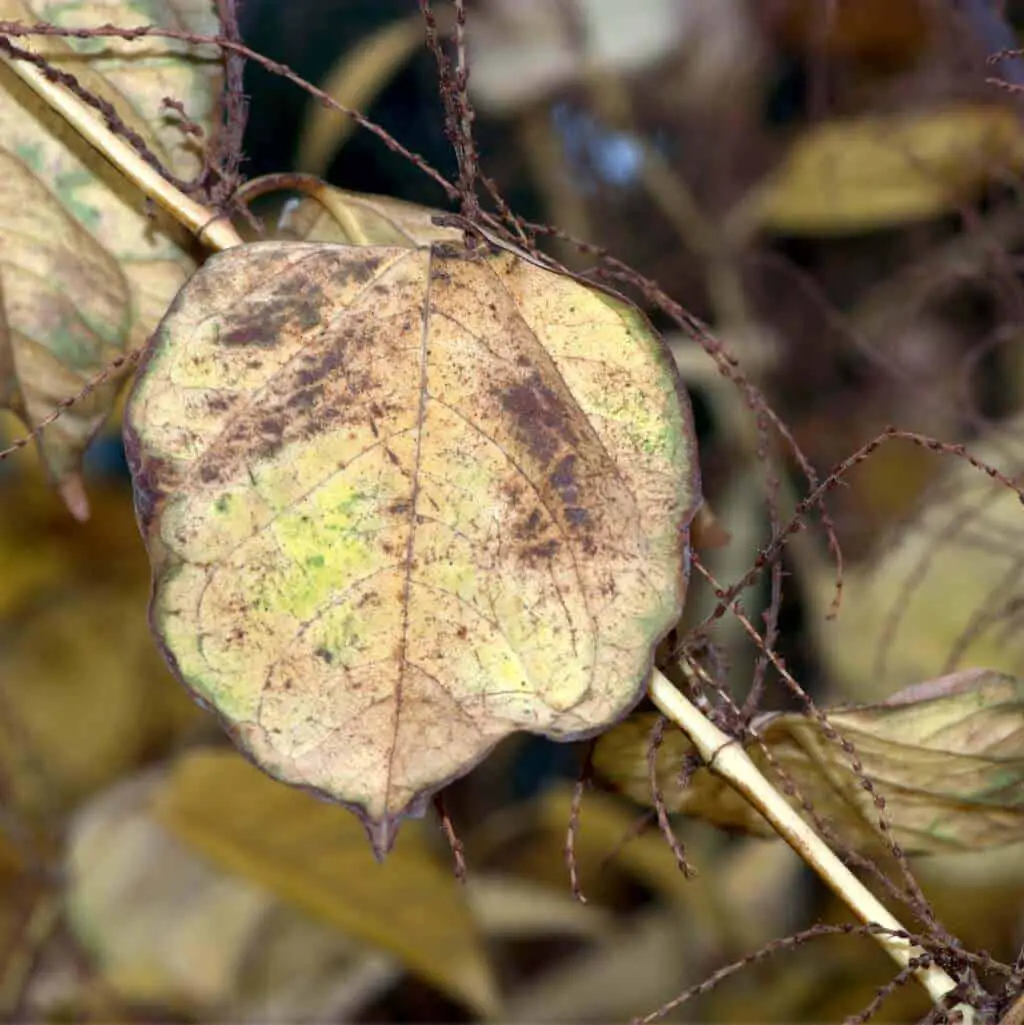
Where do you find Japanese knotweed?
As already discussed above, the Japanese knotweed is a perennial plant that becomes dormant during winter. This makes it easier for one to identify it by its bamboo-like canes.
The knotweed has strands that have basal crowns of the plant tissue from which it grows annually. Several plants look like Japanese knotweed, especially in summer, when it becomes tall and dense.
This knotweed can grow in all climatic conditions across the UK. The weed can tolerate some shade. However, it is highly competitive in moist and fertile soil. It will be shorter in areas that are dry and exposed.
The Japanese knotweed is widely spread along the railway, roadsides and river streams. In an urban setup, the weed will often grow near properties or parks.
What to do after identifying the Japanese knotweed?
Japanese knotweed is not a notifiable weed in the UK. The best action is to contact an environmental expert for help. It is crucial to consult about how to handle the weed, means of disposal, and other necessary information to help you get rid of the plant fast to prevent neighbouring land encroachment.
Want to know more?
Knotweed Removal aims to provide the most up-to-date information, help and advice for YOU to make informed decisions. If you are unsure or uncertain about how to proceed, please reach out to us and we will gladly come back and advise you as best we can.
Governmental advice can be found here and the UK law covering the removal of Japanese Knotweed as stated under the Wildlife and Countryside Act 1981 can be found here.
The best means to contact us is via our email – hello@knotweedremoval.tips
Do not forget we have a library of blogs covering many areas relevant to Japanese Knotweed, our free downloadable How-to Guides and Product Reviews on the latest methods being employed to eradicate or remove Japanese Knotweed.
Knotweed Removal, UK

